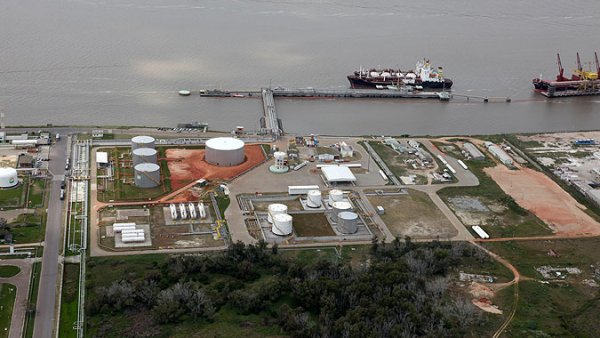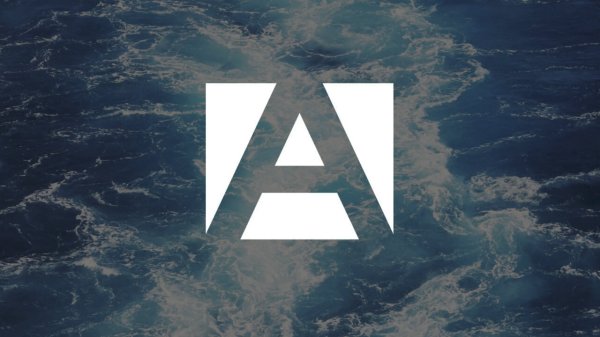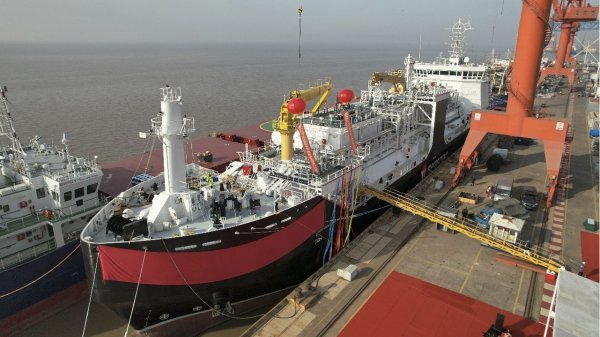Monjasa explains how it uses questionnaires to improve quality
COO tells Bunker Index how supplier and client forms are being used to 'raise the bar'.
Bunker company Monjasa has outlined how the use of questionnaires in its procedures now forms a key part of how it works with suppliers and customers as it continues to look at ways of improving quality and compliance.
Speaking to Bunker Index, COO Svend Stenberg Molholt explained that as around 50 percent of its bunker sales are via physical deliveries, Monjasa is able to "take ownership of the supply chain further back" with the terminal facilities and barges it operates. The company can therefore identify where bunker fuel is sourced from and it has supply chain documentation at its disposal. However, as approximately 50 percent of its business involves back-to-back trading, in these operations Monjasa has less direct control over sourcing and deliveries. The company has therefore implemented a system to address this issue.
As Monjasa is governed by the ISO 9001 quality management system, the bunker firm began sending out pre-qualification questionnaires (PQQs) to suppliers and other third parties. The forms require them to outline details such as the procedures they have in place and the equipment they have on board their vessels.
"Where we are physical, we can exercise the control even more hands on, but when we are not physical, we do what we can and what's 'best possible', and what no one else is doing in the market today: issuing PQQs," Molholt noted.
Additionally, for Monjasa's key back-to-back suppliers, the firm performs audits to ensure that their quality requirements are being met.
Monjasa also has a customer satisfaction programme that involves handing out customer satisfaction surveys to clients - both for physical supplies and back-to-back deliveries.
Molholt explained: "What we are in effect doing is, we are asking everybody involved in the process - and also the people working on other ships - was it okay, or could it be done even better?"
In terms of the feedback received from the surveys, according to Molholt, "98.9 percent are telling us that we are doing a good job". The figure is based on 8,071 responses.
Of the 92 respondents that have come back with concerns, Molholt explained that Monjasa is then able to get in contact with these clients in order to see how they can improve their setup in the future.
Evaluating the efficacy of the programme, Molholt noted that the rolling out of the surveys had had a positive effect on how the company was being perceived by its clients.
"Engaging in those dialogues in places where they have never seen a customer satisfaction survey has just increased the trust in us. Also, we believe that it shows to everybody operating in the market that we need to raise the bar together; and I think that's good not only for Monjasa but also for the bunkering industry," Molholt concluded.
Speaking to Bunker Index, COO Svend Stenberg Molholt explained that as around 50 percent of its bunker sales are via physical deliveries, Monjasa is able to "take ownership of the supply chain further back" with the terminal facilities and barges it operates. The company can therefore identify where bunker fuel is sourced from and it has supply chain documentation at its disposal. However, as approximately 50 percent of its business involves back-to-back trading, in these operations Monjasa has less direct control over sourcing and deliveries. The company has therefore implemented a system to address this issue.
As Monjasa is governed by the ISO 9001 quality management system, the bunker firm began sending out pre-qualification questionnaires (PQQs) to suppliers and other third parties. The forms require them to outline details such as the procedures they have in place and the equipment they have on board their vessels.
"Where we are physical, we can exercise the control even more hands on, but when we are not physical, we do what we can and what's 'best possible', and what no one else is doing in the market today: issuing PQQs," Molholt noted.
Additionally, for Monjasa's key back-to-back suppliers, the firm performs audits to ensure that their quality requirements are being met.
Monjasa also has a customer satisfaction programme that involves handing out customer satisfaction surveys to clients - both for physical supplies and back-to-back deliveries.
Molholt explained: "What we are in effect doing is, we are asking everybody involved in the process - and also the people working on other ships - was it okay, or could it be done even better?"
In terms of the feedback received from the surveys, according to Molholt, "98.9 percent are telling us that we are doing a good job". The figure is based on 8,071 responses.
Of the 92 respondents that have come back with concerns, Molholt explained that Monjasa is then able to get in contact with these clients in order to see how they can improve their setup in the future.
Evaluating the efficacy of the programme, Molholt noted that the rolling out of the surveys had had a positive effect on how the company was being perceived by its clients.
"Engaging in those dialogues in places where they have never seen a customer satisfaction survey has just increased the trust in us. Also, we believe that it shows to everybody operating in the market that we need to raise the bar together; and I think that's good not only for Monjasa but also for the bunkering industry," Molholt concluded.

|
IMO approves pricing mechanism based on GHG intensity thresholds
Charges to be levied on ships that do not meet yearly GHG fuel intensity reduction targets. |
|
|
|
||

|
VARO Energy expands renewable portfolio with Preem acquisition
All-cash transaction expected to complete in the latter half of 2025. |
|
|
|
||

|
NYK trials biofuel in milestone coal carrier test
Vessel is used to test biofuel for domestic utility company. |
|
|
|
||

|
H-Line Shipping orders LNG bunkering vessel
Vessel with 18,000-cbm capacity to run on both LNG and MDO. |
|
|
|
||

|
How to engineer and manage green shipping fuels | Stanley George, VPS
Effective management strategies and insights for evolving fuel use. |
|
|
|
||

|
Swedish government bans scrubber wastewater discharges
Discharges from open-loop scrubbers to be prohibited in Swedish waters from July 2025. |
|
|
|
||

|
MAN Energy Solutions achieves 100% load milestone for ammonia engine
Latest tests validate fuel injection system throughout the entire load curve. |
|
|
|
||

|
Petrobras secures ISCC EU RED certification for B24 biofuel blend at Rio Grande
Blend consisting of 24% FAME is said to have been rigorously tested to meet international standards. |
|
|
|
||

|
Stolt-Nielsen to fully control Avenir LNG with acquisition
Share purchase agreement to buy all shares from Golar LNG and Aequitas. |
|
|
|
||

|
Bureau Veritas supports launch of CIMC SOE's LNG bunkering vessel
Handover of Seaspan Energy's cutting-edge 7,600-cbm vessel completed. |
|
|
|
||
Related Links
- · Monjasa COO reflects on increased scrutiny from clients, banks and regulators [Insights]
- · Monjasa COO outlines firm's global approach to compliance [Insights]
- · Monjasa launches MOST global trainee programme [Insights]
- · Monjasa records 'steep increase' in Persian Gulf cruise ship volumes [Insights]
- · Monjasa secures floating storage for West Africa in 'pioneering move' [Insights]
-
· Monjasa A/S [Directory]
- · Denmark [Directory]

